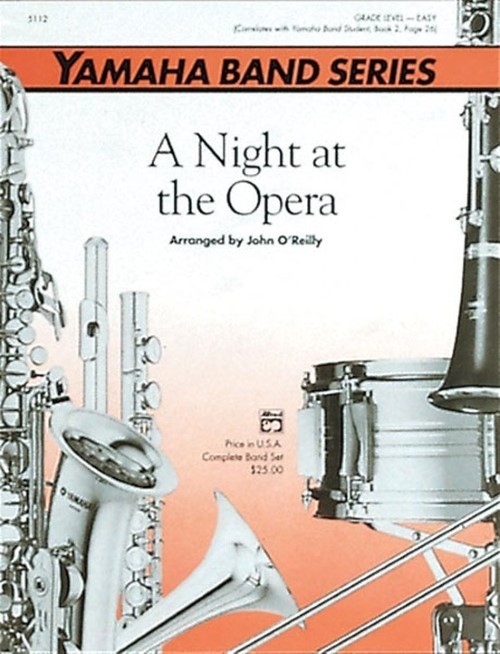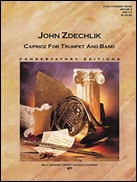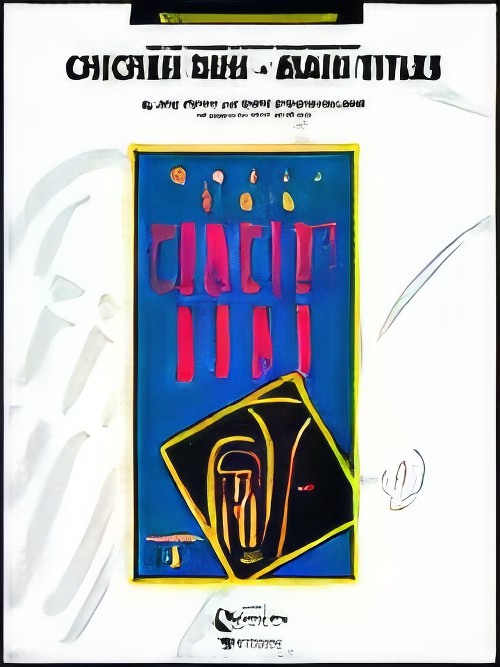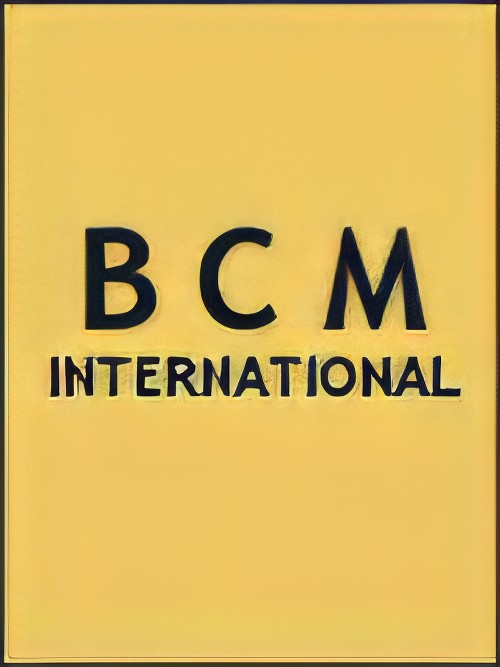Results
-
 £37.95
£37.95A Night at the Opera (Concert Band - Score and Parts) - O'Reilly, John
Serve up a special concert treat with this unique arrangement of three popular opera themes: Triumphal March from Aida, Dance from Hansel and Gretel and the Toreador Song from Carmen. A fantastic way to introduce some of the world's most-loved opera themes to your young students.
Estimated dispatch 7-14 working days
-
 £112.50
£112.50CAPRICE FOR TRUMPET AND BAND (Concert Band) - Zdechlik, John
Caprice for Trumpet and Band was written in 1994. It was commissioned by Robert E Foster, Conductor of the University of Kansas Symphonic Band. The premier performance was presented on March, 9 1995 in Lawrence, Kansas at the 61st annual conference of the American Bandmasters Association. The soloist was William Campbell, Professor of Trumpet at The University of Kansas. It was the intent of Robert Foster and the composer to produce a work which was challenging for a professional trumpet player yet also playable by an outstanding college student. The piece consist of two contrasting themes in the allegro section followed by a lyrical middle section. Then the first two themes return in altered fashion.Duration: 7:30 American Grade 5
Estimated dispatch 7-14 working days
-
 £64.99
£64.99CHICKEN RUN (Main Title) (Young Band) - Gregson-Williams & Powell - Murtha, Paul
This witty and entertaining movie brought some amazingly strong musical themes. While paying homage to the classic WWII movie themes, kazoos and whistling are cleverly incorporated for a bit of whimsy.
Estimated dispatch 7-14 working days
-
£84.99
Classics on Parade (Concert Band - Score and Parts)
Classics on Parade is a wonderful and original compilation of nineteen famous classical themes. Pieces by Beethoven, Mozart, Haydn, and a number of other well-known composers are heard, some on their own and some interwoven with other themes. Classics on Parade will enrich the light classical repertoire available for concert band. Includes such well know works as: Eine Kleine Nachtmusik (W.A. Mozart), Trumpet Concerto (F.J. Haydn), La Traviata(G. Verdi), New World Symphony (A. Dvorak), Clarinet Concerto (W.A. Mozart), Orpheus in the Underworld (J. Offenbach) and many more. 02:30
Estimated dispatch 7-14 working days
-
£118.99
Davy Crockett (Concert Band - Score and Parts)
In writing this piece, Gino Bergamini was inspired by the figure of Davy Crockett, hunter and pioneer in the colonisation of the western part of North America. The piece is built entirely on the smooth succession of intriguing themes and characterised by sharp rhythms. The themes, after a short elaboration with an expressive and meaningful style, return in a finale with rich sonority to recreate the fascinating atmosphere of that mythical hero Davy Crockett. 06:00
Estimated dispatch 7-14 working days
-
 £77.22
£77.22Force of Destiny
Commissioned in honor of a beloved band director who passed away at too young an age, Force of Destiny is a bold, beautiful, and upbeat celebration of the meaning of life and the pursuit of one's destiny. A gentle introduction leads to up-tempo themes that are alternately martial and lyrical. The delicate middle section, which builds to a powerful climax, provides an expressive showcase for your band. A strong restatement of the opening theme powers to a bold and dramatic finish. The variety of themes, tempos, colors, and expressions in this piece make it ideal for contest or competition, and an excellent way to showcase the subtly and power of your ensemble.
Estimated dispatch 7-14 working days
-
 £51.48
£51.48Gale Force
The forces of nature and the sea are portrayed in "Gale Force." A powerful introduction leads to driving themes that depict a tempest at sea. A temporary calm prevails, providing beautiful lyrical themes that showcase the subtly and expressiveness of your ensemble. Driving rhythms then lead to a thrilling conclusion. Showcase the musicality of your band in this dramatic tour-de-force that will excite the imagination of your audience and band alike.
Estimated dispatch 7-14 working days
-
 £51.48
£51.48Let Hope Reign
This impressive Larry Neeck overture features energetic, upbeat themes, colors, and rhythms. A beautiful slow section provides a lovely contrast to the driving themes. With plenty of percussion, and a multitude of teaching opportunities, "Let Hope Reign" is an excellent choice for your band's next contest or concert. Inspirational!
Estimated dispatch 7-14 working days
-
 £43.95
£43.95MERRY MOZART CHRISTMAS, A (Concert Band) - Lewis, Brian
Take some of Mozart's most beloved themes, sprinkle in a dash of holiday tunes and what do you get? A Merry Mozart Christmas, of course! This clever arrangement combines themes from A Little Night Music, The Marriage of Figaro, Turkish Rondo and Symphony No. 40 with traditional Christmas tunes you'd never expect. A true audience pleaser that your students will love to play!
Estimated dispatch 7-14 working days
-
 £89.99
£89.99METAMARCH (Concert Band) - Bryant, Steven
In this third installment of a series of pieces that quote and rework familiar band themes (after Chester Leaps In and ImPercynations), composer Steven Bryant uses the classic march themes Americans We, Liberty Bell March and National Emblem as the basis of this humorous and unexpected take on the traditional march. Slightly warped, but unmistakably entertaining, this well-constructed novelty is sure to bring a smile. Duration: 4:00
Estimated dispatch 7-14 working days
